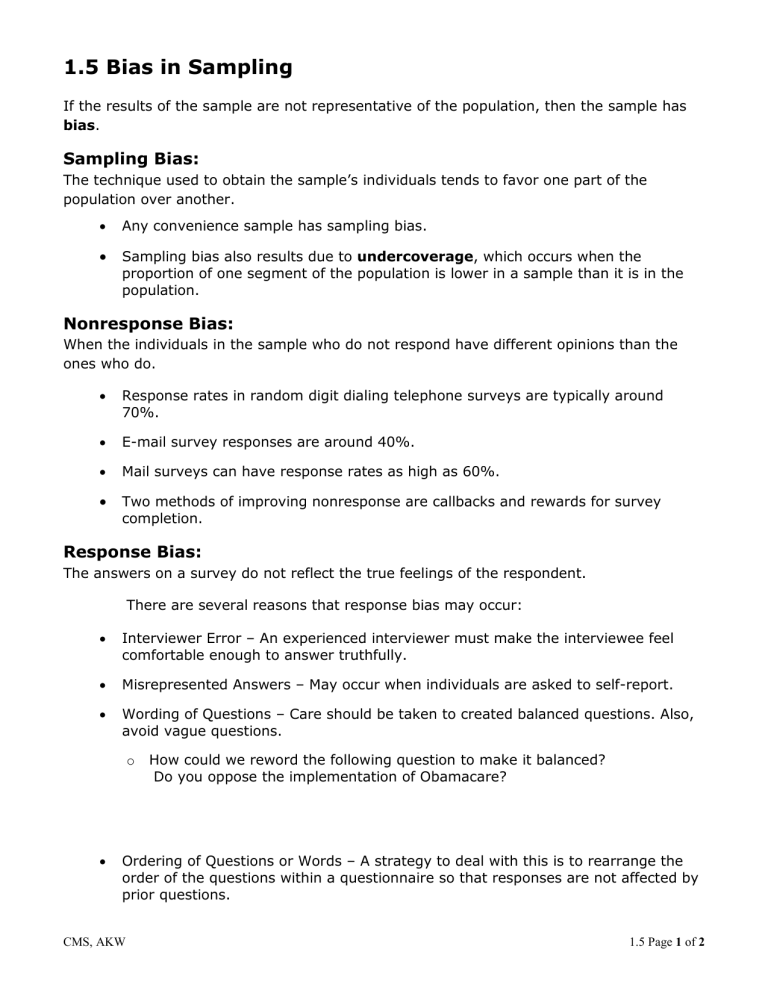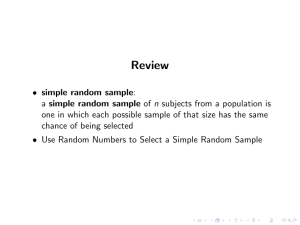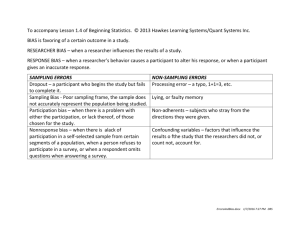
1.5 Bias in Sampling If the results of the sample are not representative of the population, then the sample has bias. Sampling Bias: The technique used to obtain the sample’s individuals tends to favor one part of the population over another. Any convenience sample has sampling bias. Sampling bias also results due to undercoverage, which occurs when the proportion of one segment of the population is lower in a sample than it is in the population. Nonresponse Bias: When the individuals in the sample who do not respond have different opinions than the ones who do. Response rates in random digit dialing telephone surveys are typically around 70%. E-mail survey responses are around 40%. Mail surveys can have response rates as high as 60%. Two methods of improving nonresponse are callbacks and rewards for survey completion. Response Bias: The answers on a survey do not reflect the true feelings of the respondent. There are several reasons that response bias may occur: Interviewer Error – An experienced interviewer must make the interviewee feel comfortable enough to answer truthfully. Misrepresented Answers – May occur when individuals are asked to self-report. Wording of Questions – Care should be taken to created balanced questions. Also, avoid vague questions. o How could we reword the following question to make it balanced? Do you oppose the implementation of Obamacare? Ordering of Questions or Words – A strategy to deal with this is to rearrange the order of the questions within a questionnaire so that responses are not affected by prior questions. CMS, AKW 1.5 Page 1 of 2 Type of Question – Open response questions versus closed response questions such as multiple choice. What are some advantages and disadvantages to each? Data-entry Error – Not technically a result of response bias, but can lead to results that do not represent the population. Errors in Sampling: Nonsampling errors result from the process of obtaining the data. These result from undercoverage, nonresponse bias, response bias, or data-entry error. Sampling errors result from using a sample to estimate information about a population. These occur when the sample gives incomplete information about a population. CMS, AKW 1.5 Page 2 of 2




